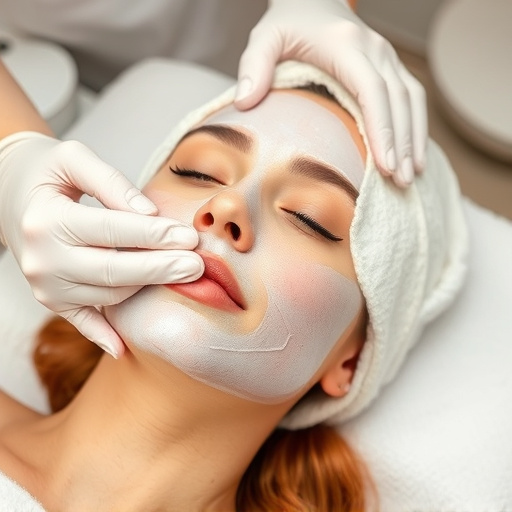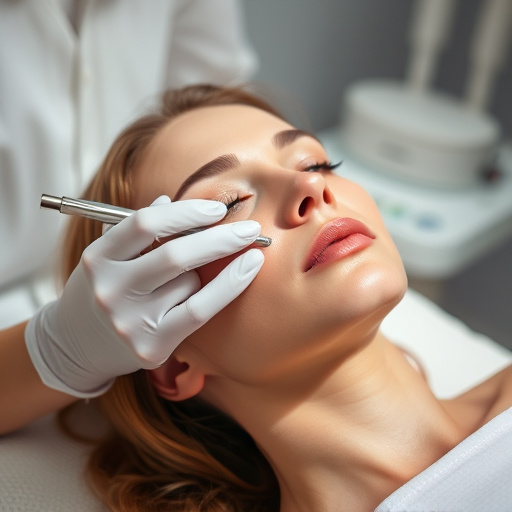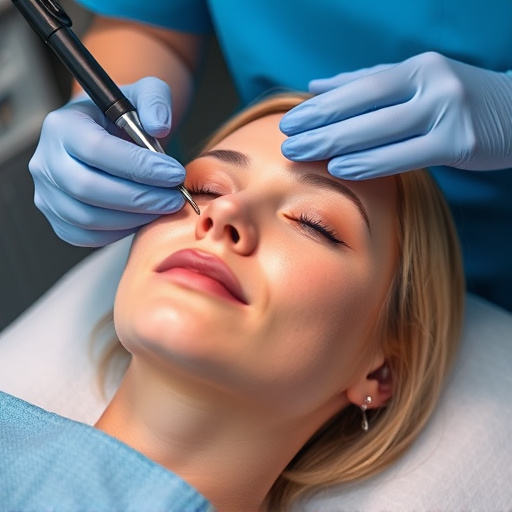Understanding natural hair growth cycles after stomach hair removal is key. Phases include anagen (active growth), catagen (transitional), and telogen (resting). Genetic factors and hormonal changes influence regrowth rate and quality. Laser treatments yield slower but more permanent results than shaving or waxing. Proper hygiene, moisturizing, and anti-aging treatments enhance skin appearance post-removal. Regular exfoliation and hydration ensure a smoother complexion. Estheticians offer guidance for optimal care.
After stomach hair removal, regrowth is natural and often a topic of interest. This article delves into understanding the science behind post-removal hair growth, exploring the cycles and factors that influence speed and quality. We uncover strategies for effective post-treatment care to manage and optimize regrowth. From knowledge of hair follicles’ dynamics to practical tips, these insights are essential for anyone considering or experiencing stomach hair removal, ensuring a smoother transition.
- Understanding Hair Growth Cycles After Removal
- Factors Influencing Regrowth Rate and Quality
- Effective Post-Removal Care Strategies
Understanding Hair Growth Cycles After Removal

After stomach hair removal, understanding the natural cycles of hair growth is key to recognizing regrowth. Hair on the stomach, like other body hair, follows a unique growth pattern consisting of three distinct phases: anagen (active growth), catagen (transitional phase), and telogen (resting phase). During anagen, which can last for several years in some areas, hair grows at a steady rate. When hair removal occurs, whether through shaving, waxing, or laser treatments, the active growing hairs are cut off, but the underlying follicle remains intact.
This disrupts the natural cycle temporarily, leading to the appearance of regrowth. In response to skin brightening and hydrating facials, or even microneedling therapy, the body may stimulate a new anagen phase, encouraging hair growth again. Recognizing these cycles helps individuals manage expectations and understand that regrowth is a normal part of the process, offering insights into how to best care for the skin and hair post-removal.
Factors Influencing Regrowth Rate and Quality

The rate and quality of hair regrowth after stomach hair removal can be influenced by various factors. One key determinant is genetics; individuals with thicker, coarser hairs may notice regrowth sooner and more prominently than those with finer, lighter hairs. Hormonal changes also play a significant role, as elevated androgen levels can stimulate hair growth in certain areas, leading to faster regrowth after removal.
Additionally, the method of stomach hair removal matters. Laser treatments, for instance, target the hair follicle itself, often resulting in slower but more permanent regrowth compared to shaving or waxing. Professional skincare routines and facial treatments can also contribute to managing regrowth, promoting skin brightening and reducing the appearance of coarse hairs. Skilled estheticians can offer guidance on post-removal care to optimize the time between treatments and the overall quality of the skin.
Effective Post-Removal Care Strategies

Effective post-removal care is crucial for achieving optimal results after stomach hair removal. Firstly, maintaining proper hygiene is essential; gentle cleansing with a mild cleanser and avoiding harsh scrubs or irritants will prevent post-inflammatory hyperpigmentation. Moisturizing the skin regularly also plays a significant role in smoothing the transition period, as dry skin can lead to itchiness and discomfort.
Additionally, incorporating anti-aging treatments like chemical peels into your skincare routine can help reduce hair regrowth by eliminating dead skin cells and promoting cell turnover. Facial treatments designed for sensitive skin can further soothe and calm the area, while also preparing it for future hair removal methods. Regular exfoliation and hydration will ensure a smoother, softer complexion post-procedure.
Stomach hair removal can effectively reduce or eliminate unwanted hair, but understanding the subsequent regrowth is key. By comprehending the hair growth cycles, recognizing factors that influence regrowth rate and quality, and implementing effective post-removal care strategies, individuals can manage their stomach hair more efficiently. These insights empower folks to navigate the process, ensuring better results in the long term for a smoother, more controlled experience with stomach hair removal.














